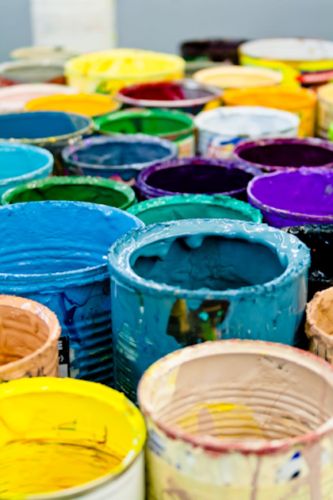Advertisement
Benefits of Using Eco-Friendly Paint for Your Home

Benefits of Using Eco-Friendly Paint for Your Home
As the world becomes more aware of the climate change crisis, more people are taking steps to reduce their carbon footprint. There are many well-known environmentally friendly lifestyle changes such as recycling and reducing food waste, but there are more ways to live a greener life than most people know. Paint is a common product found in homes everywhere, but not everyone is aware that there are environmentally friendly paint options. Switching to eco-friendly paints not only helps protect the planet but also brings you several additional benefits without compromising on pigment, time requirement, or the end result.

What Makes Eco-Friendly Paint Different
When you crack open a fresh can of paint there is no mistaking the distinctive and powerful chemical smell. You should avoid inhaling paint fumes as they are hazardous to your health partly due to components that make paint toxic called Volatile Organic Compounds (VOCs). VOCs are various chemicals, like ammonia, adhesives, and drying accelerants, found in paints and varnishes that can lead to numerous medical complications including headaches, respiratory issues, poor air quality, and an increased risk of cancer. You may assume that once paint dries, the toxic VOC fumes no longer pose a threat, but paint containing high levels of VOCs can continue to contaminate the air for up to 5 years after it has dried in a process called off-gassing.
It is advised you use paint with no or low levels of VOCs as those paints are healthier and more environmentally friendly. Look for water-based paints that use clays, milk proteins, balsam, and other mineral bases as these ingredients usually denote an eco-friendly paint with low levels of VOCs.
It is important to note that just because paint is ‘green’ and contains no or low levels of VOCs, doesn’t mean the paint will smell better. Not every ingredient that contributes to the harsh smell of paint is a VOC, so you cannot select environmentally friendly paint on smell alone. Regardless of how green your paint is, it is never safe to directly inhale the fumes or ingest. Also, use safe painting safety measures, such as masks and proper ventilation, with eco-friendly paint even though it is less toxic.
Benefits of Environmentally Friendly Paints
As mentioned above, paints with high levels of VOCs pose a health and environmental risk, but there are other reasons eco-friendly, low-VOC paints are beneficial to you and the planet. While eco-friendly paints cost more initially, you save money by not using traditional paint over time. Eco-friendly paints have shown better color retention, paint coverage, and abrasion resistance than traditional paint, meaning you won’t need to repaint or touch up blemishes as frequently. The higher quality of eco-friendly paints lets you use less paint less frequently saving you time, money, and preventing waste.
The higher initial price tag of eco-friendly paint is also worth paying to skip potential medical bills. VOCs are active for 5 years after the paint dries and can continue to cause or exacerbate medical issues. Paying more for environmentally friendly paint is better than paying for a doctor’s visit due to VOC fumes. Buying environmentally friendly paint will save you the headache of dealing with medical problems, time, and money. Ultimately, you and your family’s health and safety are worth the slightly higher sticker price for paint without harmful levels of VOCs.
Eco-friendly paint is made with sustainable and natural ingredients which makes the manufacturing process greener as well. Seed oil, beeswax, and lemon peel extract are common natural ingredients used during the manufacturing process. These eco-friendly components let ‘green’ paint be produced on a large scale without the usual manufacturing emissions and pollution.
Trustworthy Brands to Look For:

There are a handful of paint makers that have established themselves as trustworthy environmentally friendly brands.
- Farrow & Ball have made water-based paints for many years, but their newest eco-friendly paint formula is certified to contain low levels of VOCs. All Farrow & Ball eco-friendly paints are free from damaging chemicals like ammonia and formaldehyde.
- Marston & Langinger is a UK paint company that originally created paints to use in greenhouses. After discovering standard paint chemicals were harming greenhouse plants, they switched to an eco-friendly formula that is nearly odorless and can be bought at an affordable price.
New Science on the Horizon
Scientists at Procter and Gamble Chemicals have been working on a new organic paint solution and created a compound called Sefose. Sefose is made by combining sugar and vegetable oil giving the new paint better adhesion than resin and better brush behavior than solvents without using VOCs. This scientific advancement is far from ready for commercial use, but the technology may provide a foundation for further discoveries.
Eco-friendly paint is better for you and the planet than traditional paint with high levels of VOCs. Using water-based paint with natural ingredients is the best way to keep your walls pretty without damaging the environment, your health, or your wallet.
Gwen Lewis is a writer who lives in California. She has been in the fashion and health industry for years and loves writing on the topic to give tips from experience. In her free time, she loves to stay active and has just taken on learning how to surf. For more, visit her online portfolio here.











